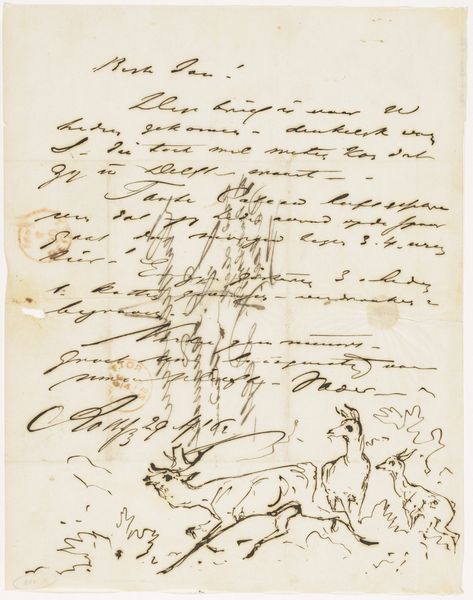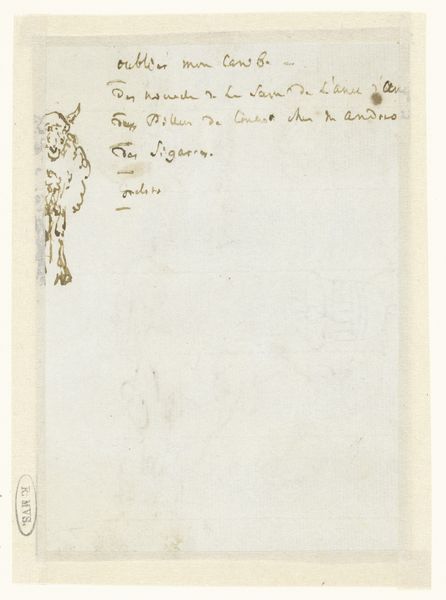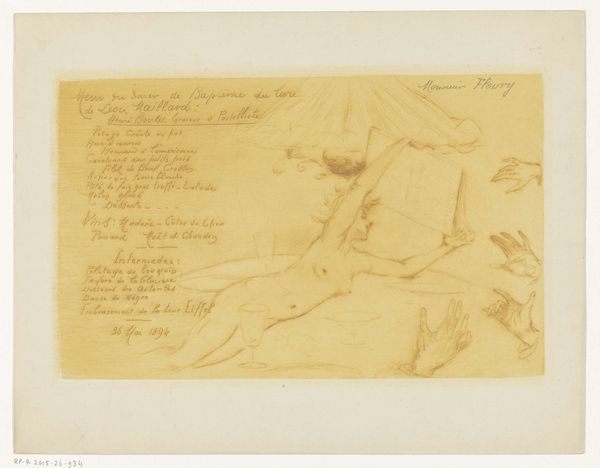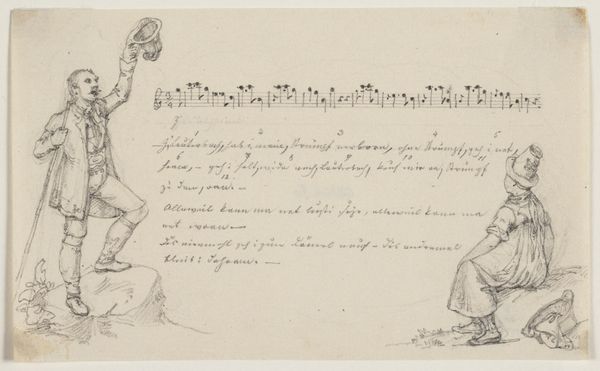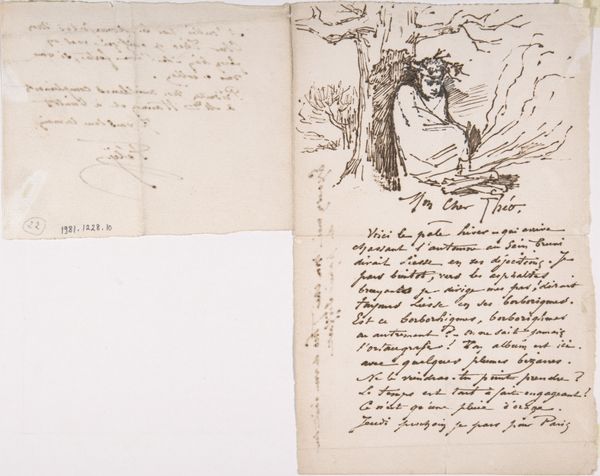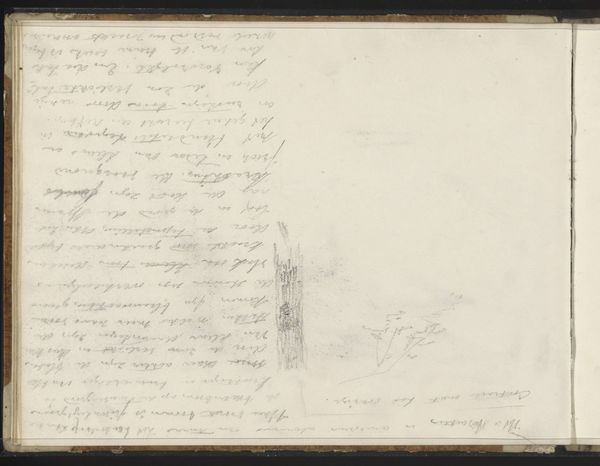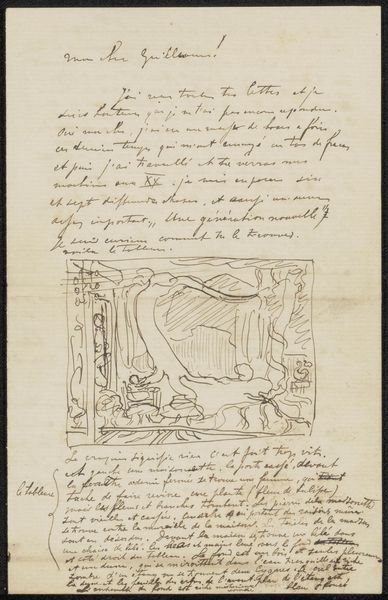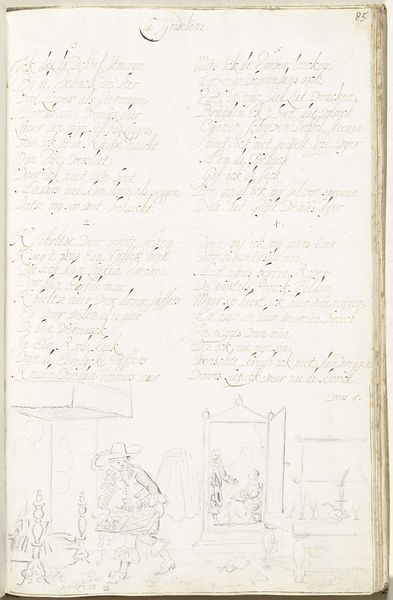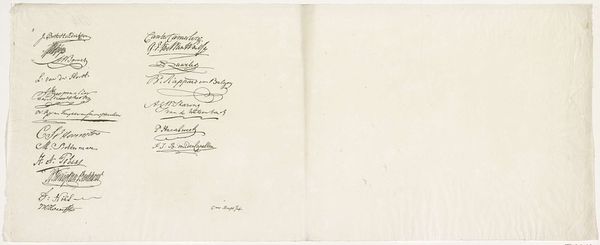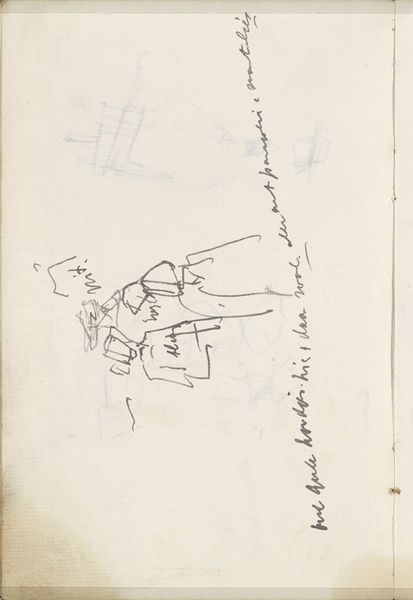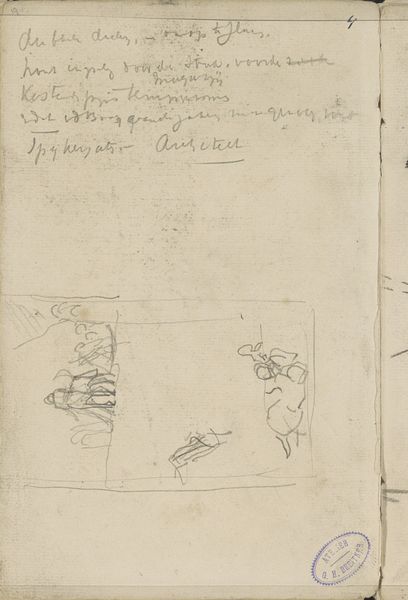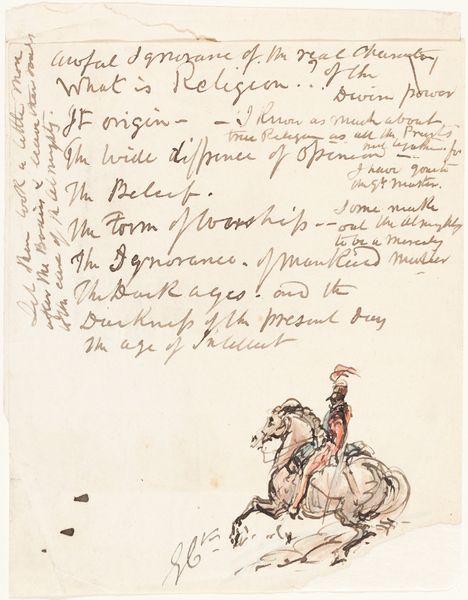
En munk prygles med en knippel af en mand iført skind-lændeklæde 1765 - 1833
0:00
0:00
drawing, ink, pen
#
drawing
#
ink drawing
#
narrative-art
#
pen sketch
#
figuration
#
ink
#
romanticism
#
pen
Dimensions: 160 mm (height) x 197 mm (width) (bladmaal)
Curator: Look at this arresting image by Gerhard Ludvig Lahde. It's a pen and ink drawing called "En munk prygles med en knippel af en mand iført skind-læendeklæde," dating roughly from 1765 to 1833. Editor: The raw aggression is immediately striking. The figure with the club seems barbaric, especially contrasted with the kneeling monk. The stark, linear quality of the ink amplifies the violence of the scene. Curator: Lahde, working within the Romantic era, often used figuration to explore power dynamics. Consider the cultural context of this work, potentially emerging from anxieties about religious authority and societal constraints. Who holds power and how is it used is very relevant here. Editor: Absolutely, and this image raises many questions. The clothing of the aggressor indicates that their conflict is beyond religious differences. The rawness suggests the primal nature of their power, maybe reflective of class structures as well. Curator: Perhaps Lahde is examining the relationship between secular power and religious authority within specific historical structures. Note the monk’s submission—a visual representation of the church under duress or perhaps deserved moral questioning. Editor: The composition is certainly provocative. And beyond the composition, is there something more fundamentally relevant to the contemporary cultural-political discourse? Curator: Indeed. Today, a work like this invites a conversation about representation and power: how we visualize the oppressed and the oppressor, and whose voices are centered in these narratives. Editor: It prompts an active dialogue and challenges viewers to look beyond the surface and understand the sociopolitical structures that perpetuate inequities in power relations. Curator: Thank you for lending your perspective on this, Editor. Considering history allows one to critically reflect on contemporary challenges and how to fight these forms of structural oppressions and abuse of power. Editor: Precisely, Curator. And that's the transformative power of art, isn't it? It acts as a portal connecting historical injustice and continuing injustices today and in the future.
Comments
No comments
Be the first to comment and join the conversation on the ultimate creative platform.
